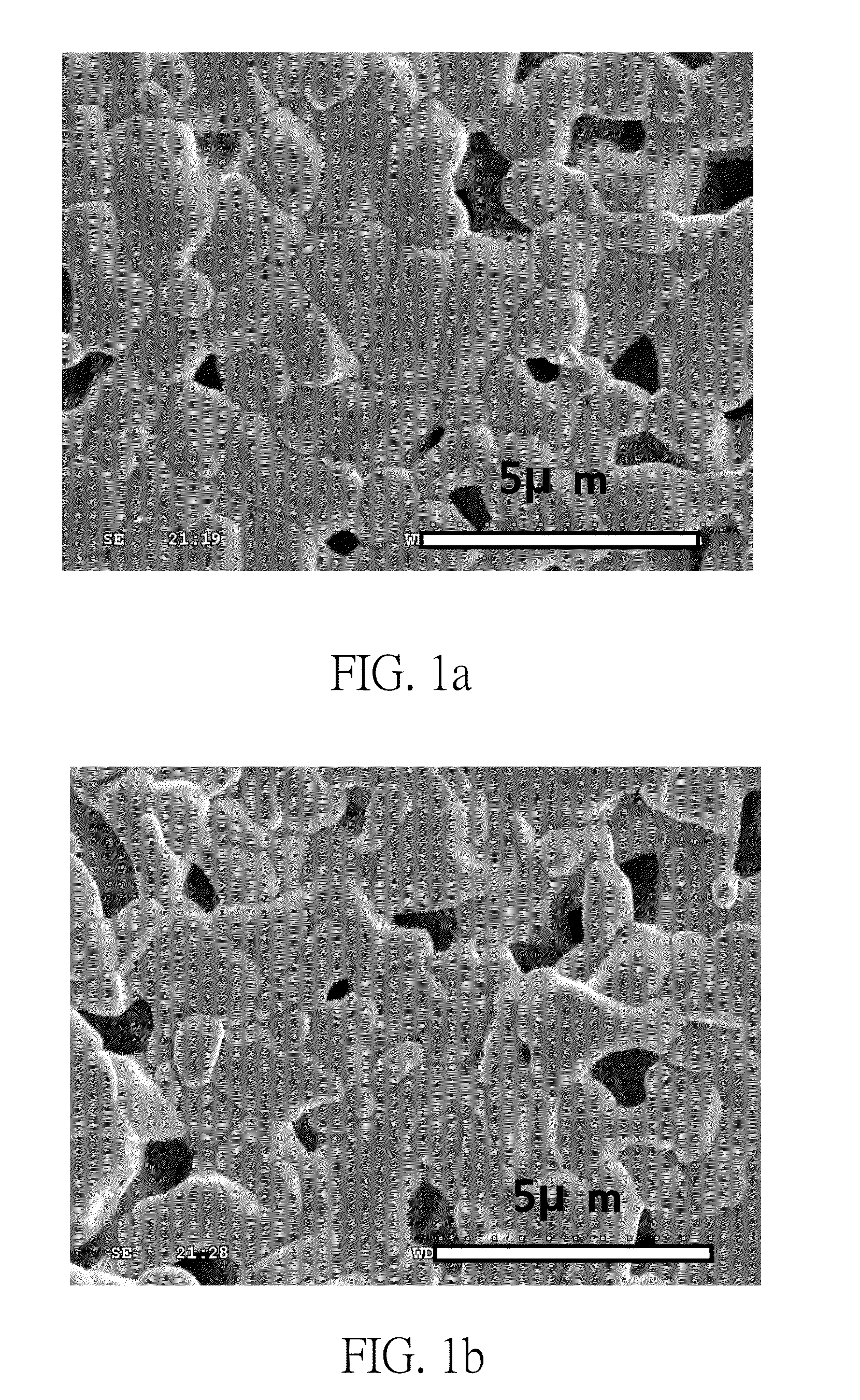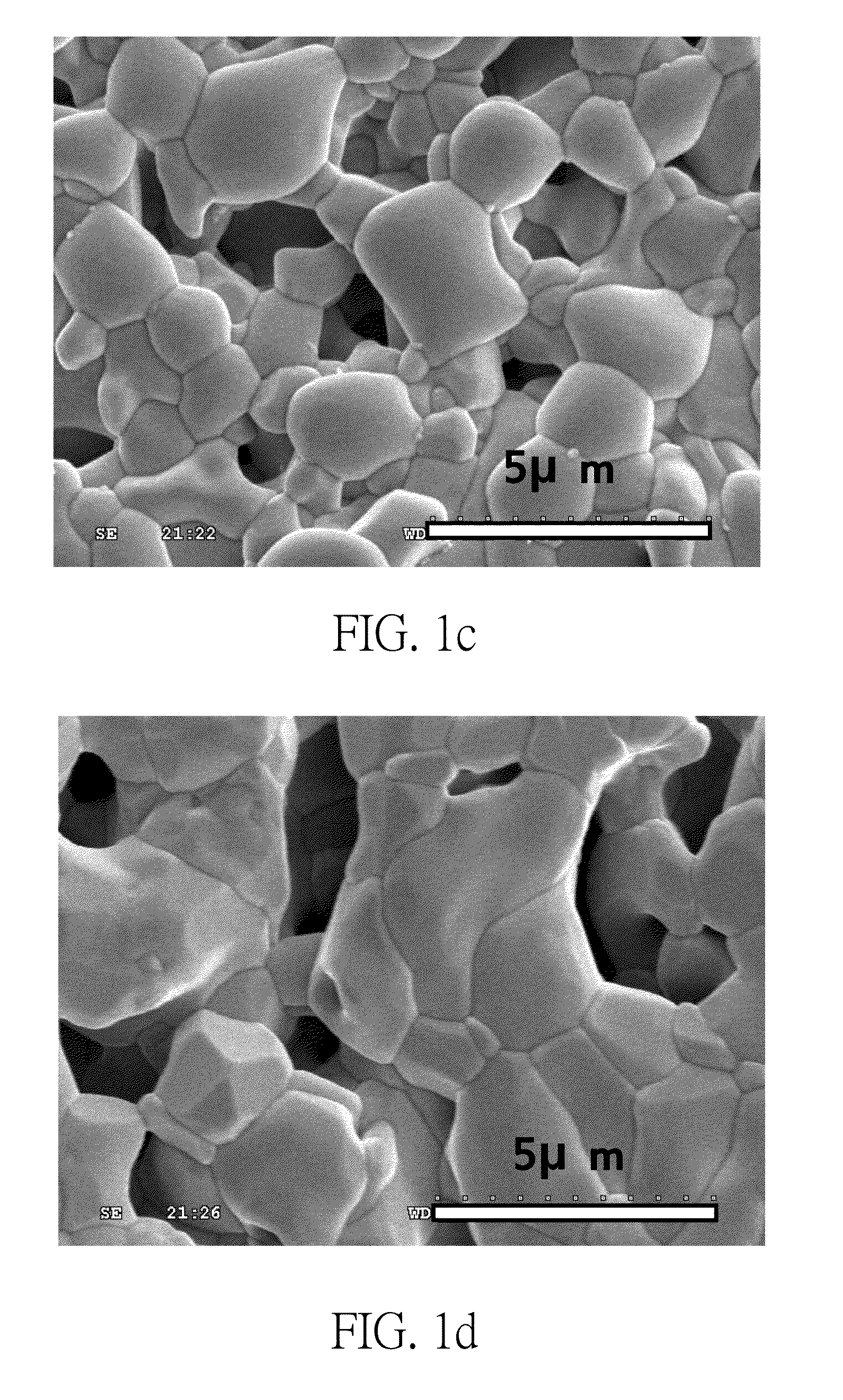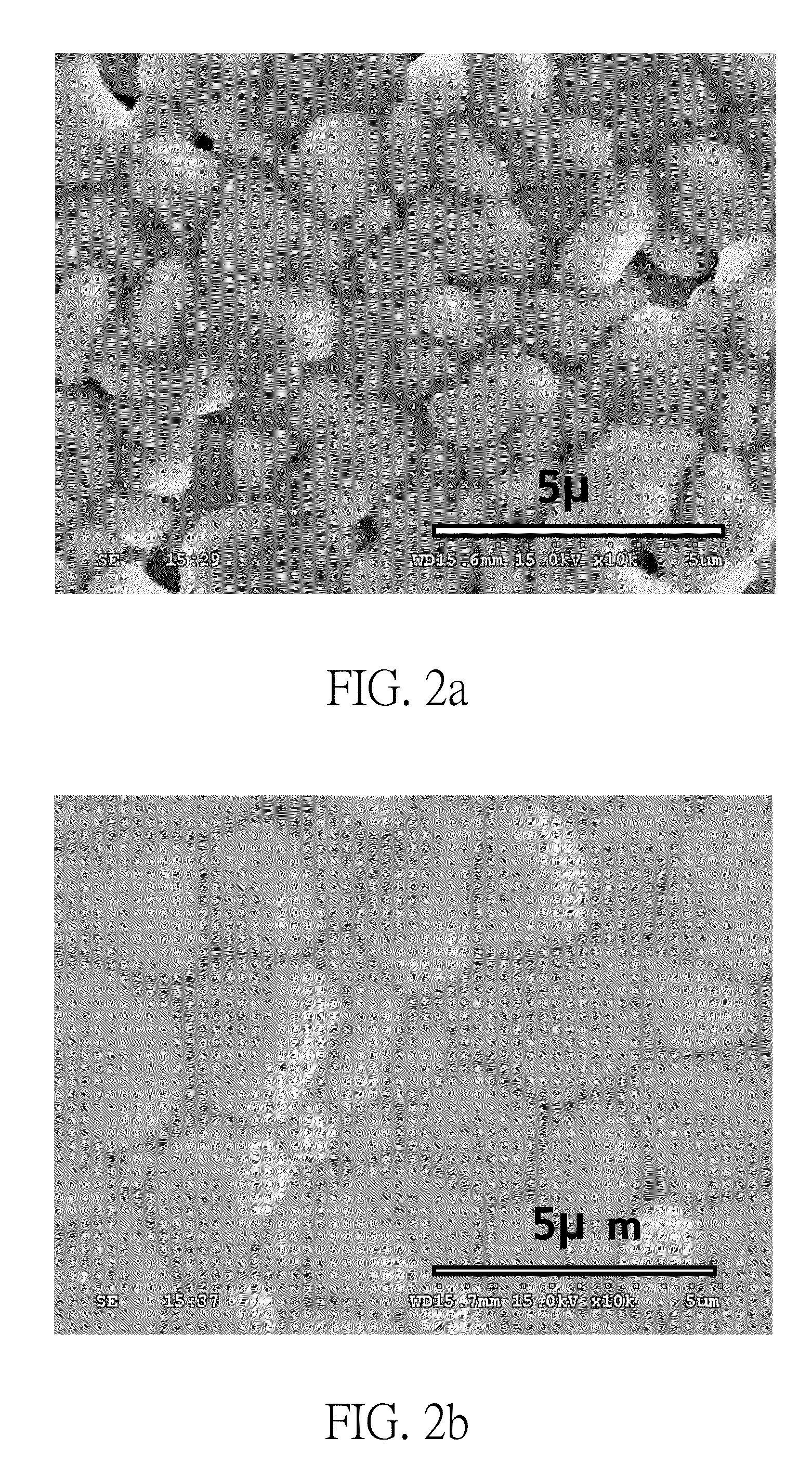Preparation method of electrolytes for solid oxide fuel cells
- Summary
- Abstract
- Description
- Claims
- Application Information
AI Technical Summary
Benefits of technology
Problems solved by technology
Method used
Image
Examples
first embodiment
The First Embodiment
[0039]Preparation of experimental groups: The first embodiment of the present invention takes Ba1-xKxCe1-y-zZryYzO3-δ Perovskite type oxides as examples of solid oxide powders. First of all, prepare five different Ba1-xKxCe0.6Zr0.2O3-δ solid oxide powders separately by a sol-gel process and a subsequent calcination process. The x values of these solid oxide powders are 0, 0.05, 0.1, 0.15 and 0.2 respectively. That is, the five solid oxide powders are BaCe0.6Zr0.2Y0.2O3-δ 6 (i.e. x=0), Ba0.95K0.05Ce0.6Zr0.2Y0.2O3-δ (i.e. x=0.05), Ba0.9K0.1Ce0.6Zr0.2Y0.2O3-δ (i.e. x=0.1), Ba0.85K0.15Ce0.6Zr0.2Y0.2O3-δ (i.e. x=0.15) and Ba0.8K0.2Ce0.6Zr0.2Y0.2O3-δ (i.e. x=0.2) respectively. These five solid oxide powders are different in both the average particle diameters and the chemical formulas.
[0040]In the present embodiment, the precursors of aforesaid Ba1-xKxCe0.06Zr0.2O3-δ solid oxide powders include Ba(NO3)2, KNO3, ZrO(NO3)2.2H2O, Ce(NO3)3.6H2O, and Y(NO3)3.6H2O. These prec...
second embodiment
The Second Embodiment
[0051]Preparation of experimental groups: In order to verify that the present invention is also applicable to other Perovskite oxides, the second embodiment of the present invention takes BaZr0.2Ce0.8-xYxO3-δ Perovskite oxides as examples of solid oxide powders. Four BaZr0.2Ce0.8YxO3-δ solid oxide powders with x values of 0, 0.2, 0.4 and 0.6 respectively are also separately prepared by a sol-gel process in combination with a calcination process.
[0052]BaZr0.2Ce0.8-xYxO3-δ solid oxide powder with x value of 0 is utilized as the first solid oxide powder, and BaZr0.2Ce0.8-xYxO3-δ solid oxide powders with x values of 0.2, 0.4 and 0.6 are separately utilized as the second solid oxide powder. The three second solid oxide powders are separately and uniformly mixed with the first solid oxide powder by the molar ratio of 1:1, and then the mixed powders are pressed and sintered to obtain three experimental groups. The electrolyte experimental group made of BaZr0.2Ce0.8O3-δ...
third embodiment
The Third Embodiment
[0056]Preparation of experimental group: In order to verify that the present invention is also applicable to Perovskite oxides having different elements of composition, the third embodiment of the present invention prepares, in the similar sol-gel process and the subsequent calcination process as mentioned above, Ba1Ce0.8Y0.2O3-σ solid oxide powder (as shown in FIG. 9a) and Ba0.6Sr0.4Ce0.4Zr0.4Y0.2O3-σ solid oxide powder (as shown in FIG. 9b), in which the solid oxide powders are also different in average particle diameters.
[0057]Ba1Ce0.8Y0.2O3-σ solid oxide powder is used as the first solid oxide powder, and Ba0.6Sr0.4Ce0.4Zr0.4Y0.2O3-σ solid oxide powder is used as the second solid oxide powder. The first and second solid oxide powders are uniformly mixed by the molar ratio of about 1:1, pressed into pellets and then sintered to yield the experimental group CE-8 of the present embodiment.
[0058]Preparation of control groups: The afore-prepared two solid oxide po...
PUM
| Property | Measurement | Unit |
|---|---|---|
| Composition | aaaaa | aaaaa |
| Density | aaaaa | aaaaa |
| Ratio | aaaaa | aaaaa |
Abstract
Description
Claims
Application Information
 Login to View More
Login to View More - R&D
- Intellectual Property
- Life Sciences
- Materials
- Tech Scout
- Unparalleled Data Quality
- Higher Quality Content
- 60% Fewer Hallucinations
Browse by: Latest US Patents, China's latest patents, Technical Efficacy Thesaurus, Application Domain, Technology Topic, Popular Technical Reports.
© 2025 PatSnap. All rights reserved.Legal|Privacy policy|Modern Slavery Act Transparency Statement|Sitemap|About US| Contact US: help@patsnap.com



